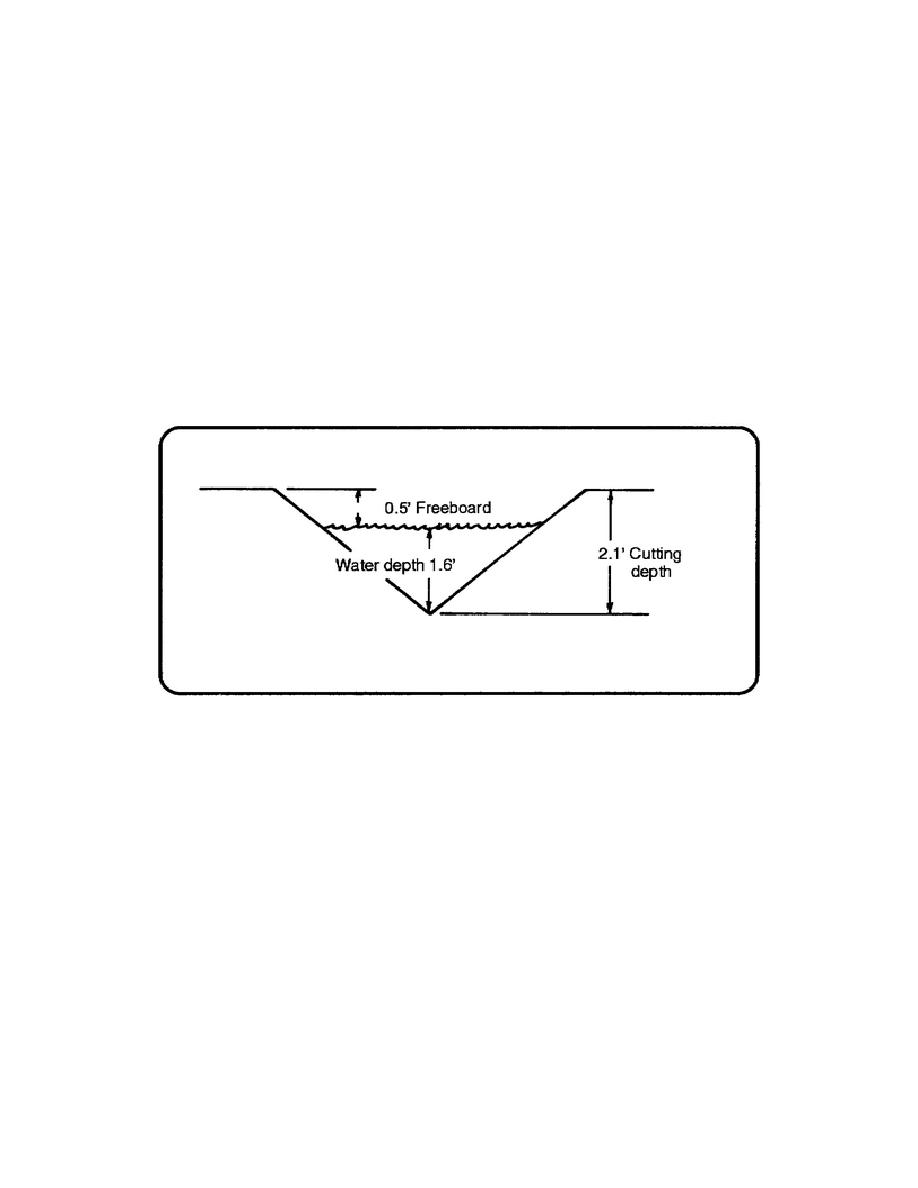
Determine Cutting Depth
STEP 8. Calculate the cutting depth (d) and draw a sketch of the ditch.
It is desirable to have the water level in the ditch at least 6 inches below the edge of the ditch as a factor of safety,
then the cutting depth is the water depth plus 6 inches of free board.
Cutting depth = d + free board
In the example, the cutting depth equals 1.6 feet plus 0.5 feet (6 inches) or 2.1 feet (see figure 4-6).
Final Cross-Section
NOTE: It is very important for the designer to communicate the right design to the equipment operator. This is
accomplished by providing a good sketch.
See figure 4-6 for an example of a designed ditch.
Figure 4-6. Example of a designed ditch
NOTE: If the velocity for the ditch had been too high, then another slope ditch with shallower side slopes could
be used; say 4:1 or 5:1 to get lower velocities. On the other hand, if the velocity were too low (for example, less
than 3 fps), we could raise the velocity by decreasing the side slope to 2:1 or 1:1. If no ditch can be made to
work, then a change to some artificial type of channel lining should be considered. If you change the design of
the ditch by installing a lining, the size of the ditch must be recalculated by calculating the hydraulic radius and
finding a new cross-sectional area and depth.
4-21
EN5465


 Previous Page
Previous Page
